Today (February 12, 2022) is an at sea heading to Elephant Island after just departing Antarctica on the MS Fram. At sea days are pretty slow save briefings and onboard educational opportunities, and unfortunately CJ spent most of the at sea days seasick and looking for distractions and moments of relief from the misery. Elephant Island is located a day’s sea journey away from the Antarctic peninsula and is located in the Southern Ocean, just bordering north of the Weddell Sea – these are known as the roughest seas in the world, and CJ certainly found them even less hospitable than the Drake Passage.
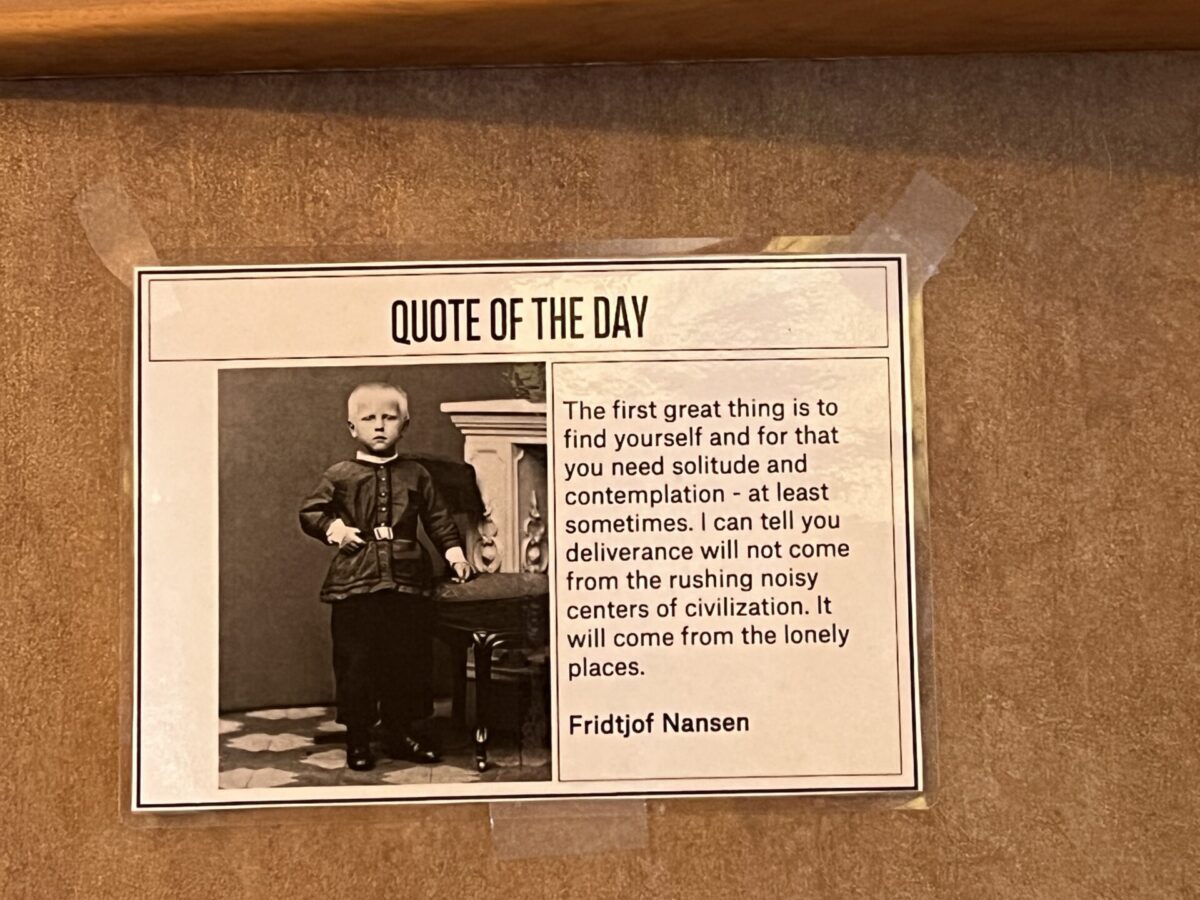
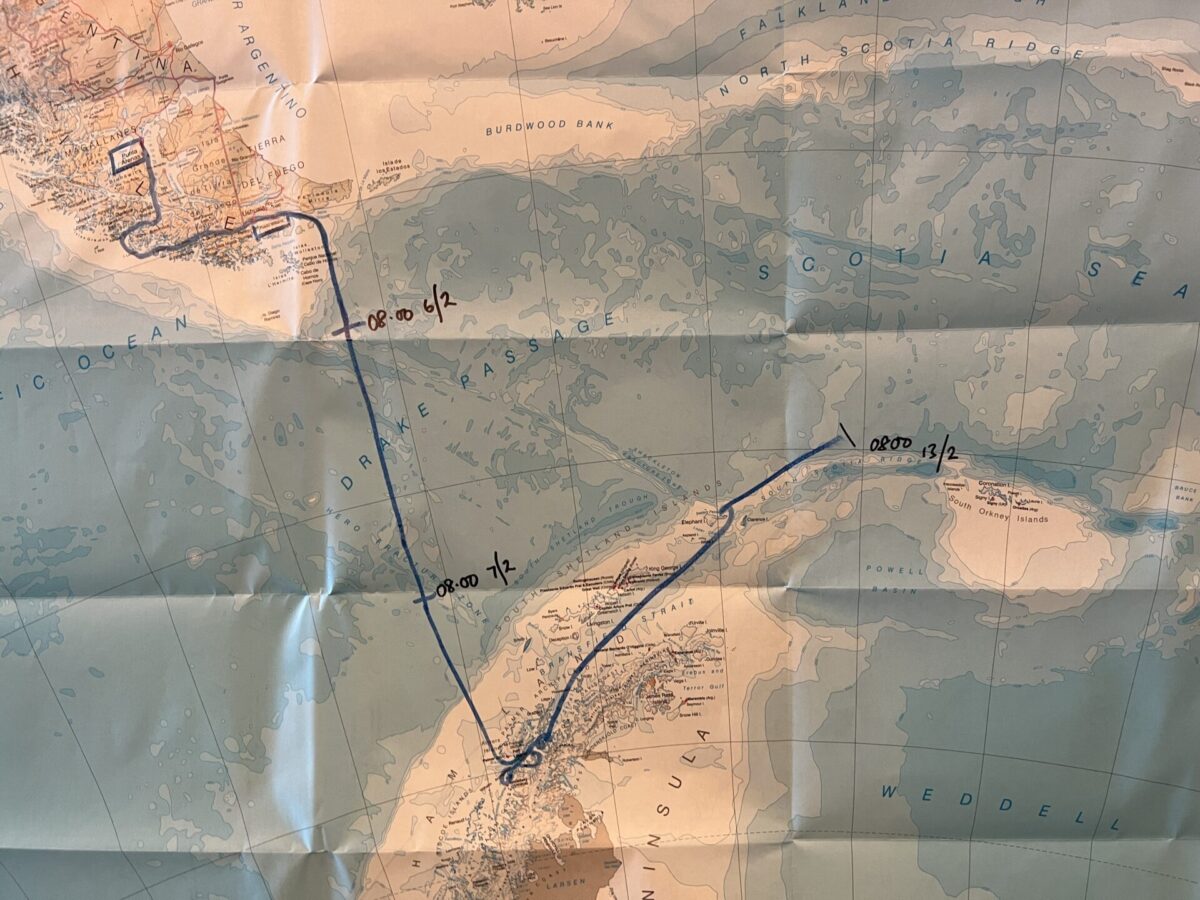
We spent our time at sea attending some great sessions, including one around Shackleton’s Endurance expedition, which helped bring the history of Elephant Island to life. I had recently read “Endurance: Shackleton’s Incredible Voyage” by Alfred Lansing, and CJ was currently reading it. It is a great book that I highly recommend! Sandra, one of the historians on board, went through the journey, but had clearly done additional research, and she brought the ordeal to life with her passion for the topic. We especially enjoyed her going into additional detail around McNeish’s cat “Mrs. Chippy”. Mrs. Chippy was actually a male tiger-striped tabby, but got the name because he would constantly follow McNeish the carpenter around the ship like a doting (or hovering) wife, and “chippy” was a term for carpenters at the time. Thus the name Mrs. Chippy was coined, and even after the crew realized the cat was male, the name stuck.
Sandra went into great detail around how Mrs. Chippy would torment the sled dogs in their kennels by walking in front of and on top of the enclosures almost to taunt them and rub in all of the freedom she had while they were locked away. At one point Mrs. Chippy apparently had had enough of sailing and actually bailed off the ship through a port hole, but thankfully one of the sailors heard his wails, and they were able to turn the ship around and scoop him back up with a net. This is miraculous, as usually anything that goes into the ocean off a ship will never be found again (this is a lesson I learned during my 4 months on Semester at Sea, and was the only thing that made me a bit nervous near railings in the open ocean). Unfortunately given the fate of the Endurance voyage, none of the stories of any of the animals had a happy ending as they were all ultimately executed when conditions became harder. It was sad to hear, but also often the way the course of history plays out. We did appreciate that McNeish loved the cat until his dying day, and the New Zealand Antarctic Society was kind enough to add a statue of Mrs. Chippy to his grave.
Another interesting session we consumed was on glaciers and icebergs. Amelie, the French ice geologist, explained to us that snow compounding over time and not fully melting during the summer months was needed to create the ice. Add in movement, and you have all of the ingredients for a glacier. Glaciers tend to have more air bubbles in them due to that compression process. When they quake or make the thunderous noise, it is often the glacier moving and cracking internally, often over ridges or hills, where you may then notice crevasses form on top. She touched on the health life cycle of a glacier, and how climate change and warming temperatures was impacting that cycle, which will eventually lead to rising water levels both from the injection of glacier melt, but also because warm water molecules take up more space that cold ones. We also learned that the general rule for ice bergs is that roughly ⅛ of them are above sea level, leaving ⅞ still below. Not many icebergs escape the current that flows around Antarctica, and if they do they quickly melt, but for the ones that stay within the current, they can sometimes circumnavigate the content for multiple years.
The resident Ornithologist, Rob, also went through a great session on the 3 years he lived on Bird Island just south of the South Georgia mainland in the early 80s studying the Albatross there. He had some amazing stories, and as we got glimpses into each of the lives of the expedition leaders and scientists, it was amazing to learn how much they had done in their lives and how impressive the lives they had lived. You could always feel a deep love for the region.
Right after dinner we came to Elephant Island and specifically Point Wild, the inhospitable island landing ground of the Endurance crew, which was the first land they had set foot on in 500 days since their ship had been stuck in the pack ice of the Weddell Sea.
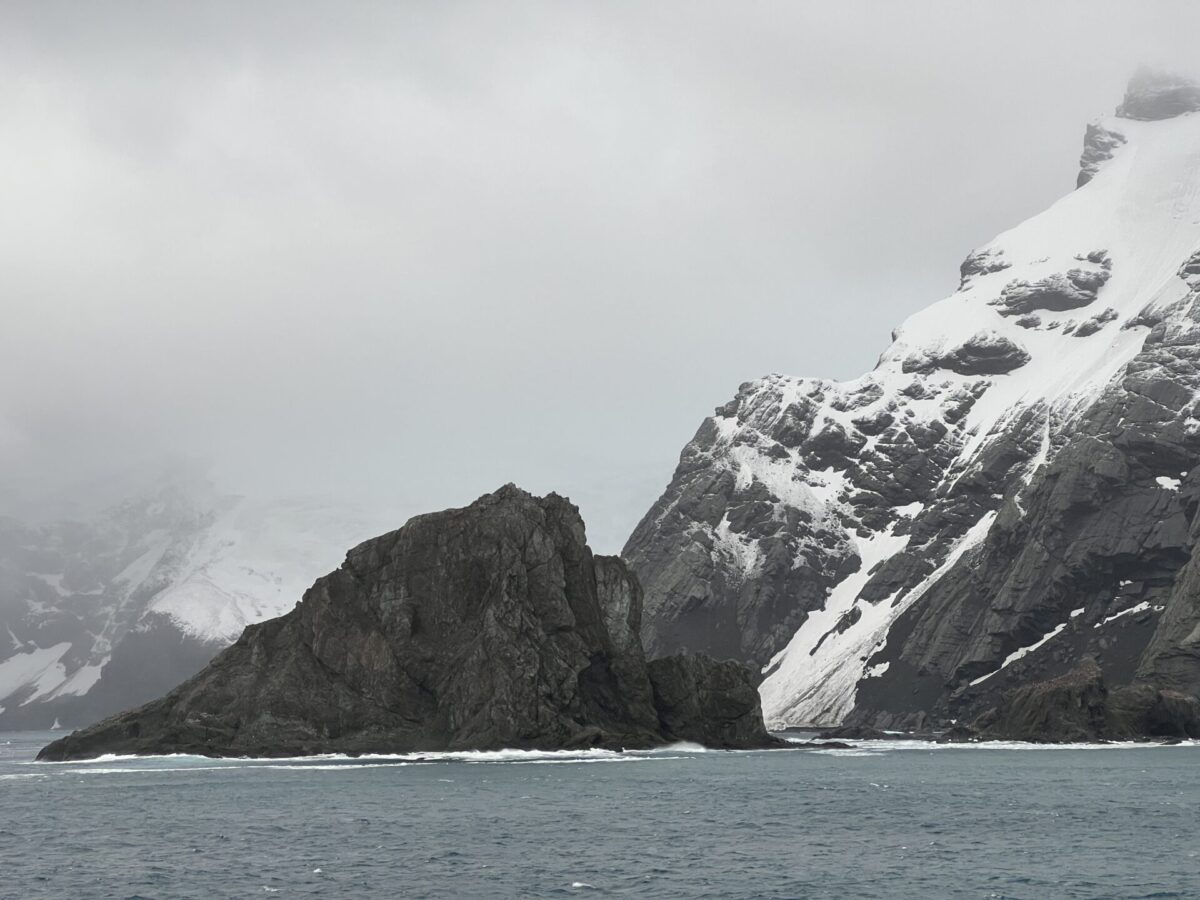
From Elephant Island, Shackleton along with five other men set out to South Georgia from this point, which was the equivalent of hitting a needle in a hay stack sailing across 820 miles of the roughest seas in the world. If they had missed “the needle” the currents would have continued to push them out to the open ocean and to certain death. On deck we peered towards the narrow strip of land where the remaining 22 sailors had survived for 4½ months before they were ultimately rescued, where a small monument now stood memorializing the small strip of land on Elephant Island.
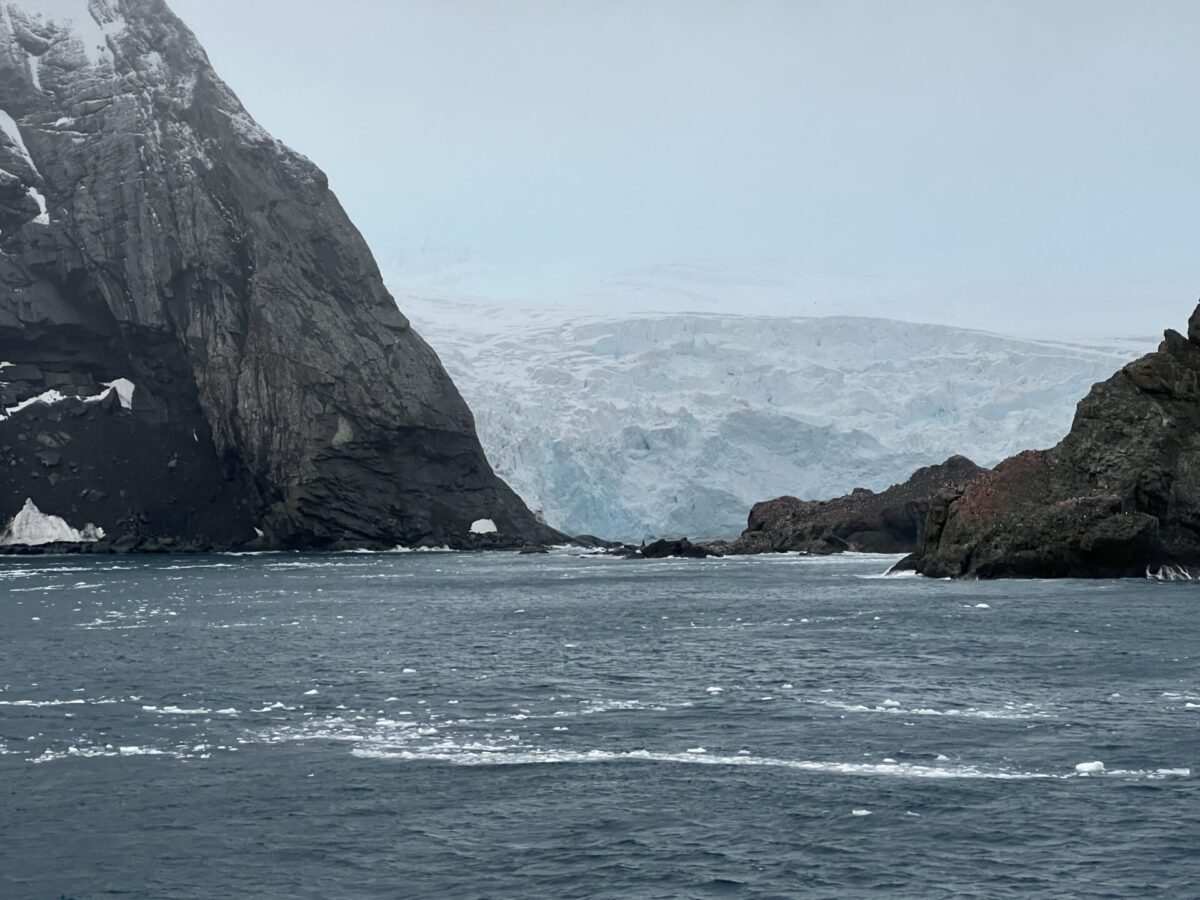
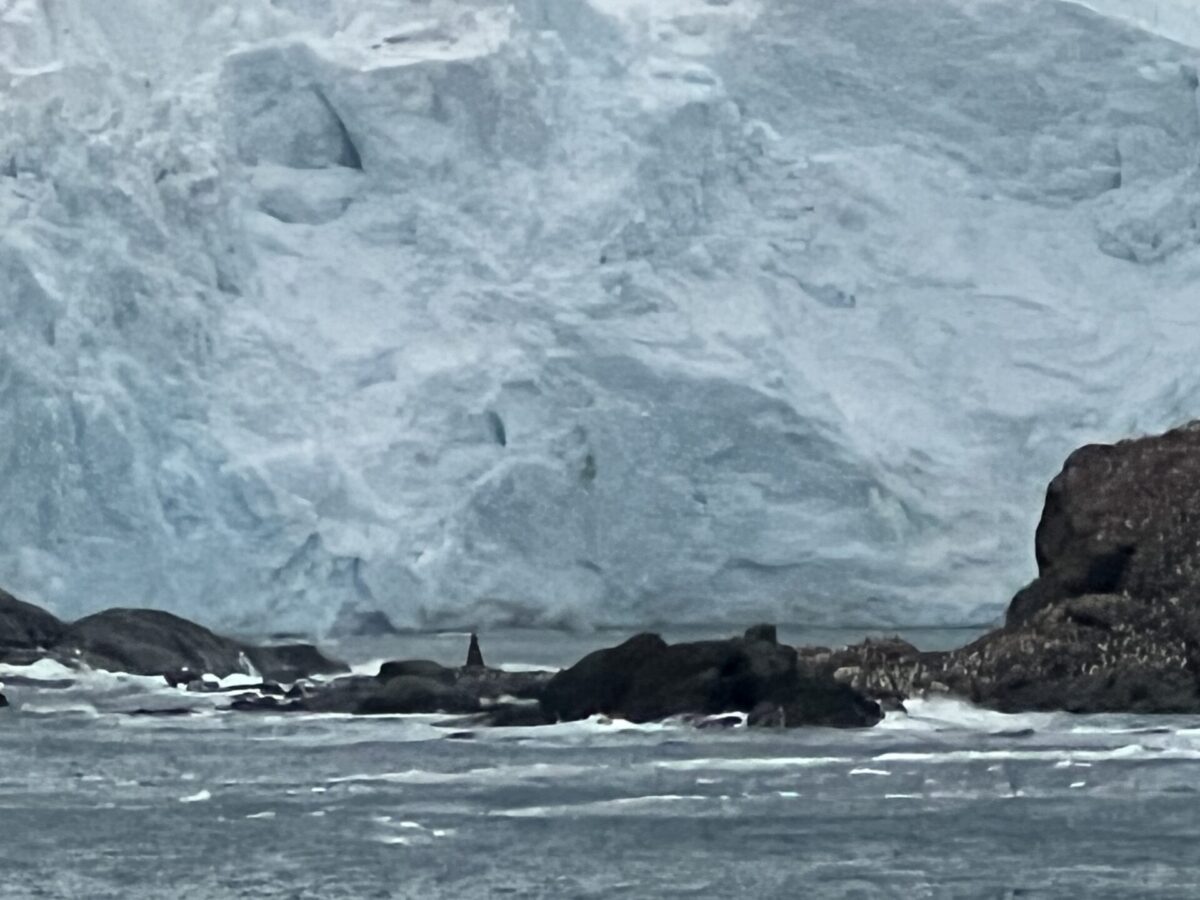
They were there in winter, and while we were here in the Antarctic summer, we still had a taste for the misery they endured, as the katabatic winds howled off the mountains and through our ship, coming close to blowing people away.
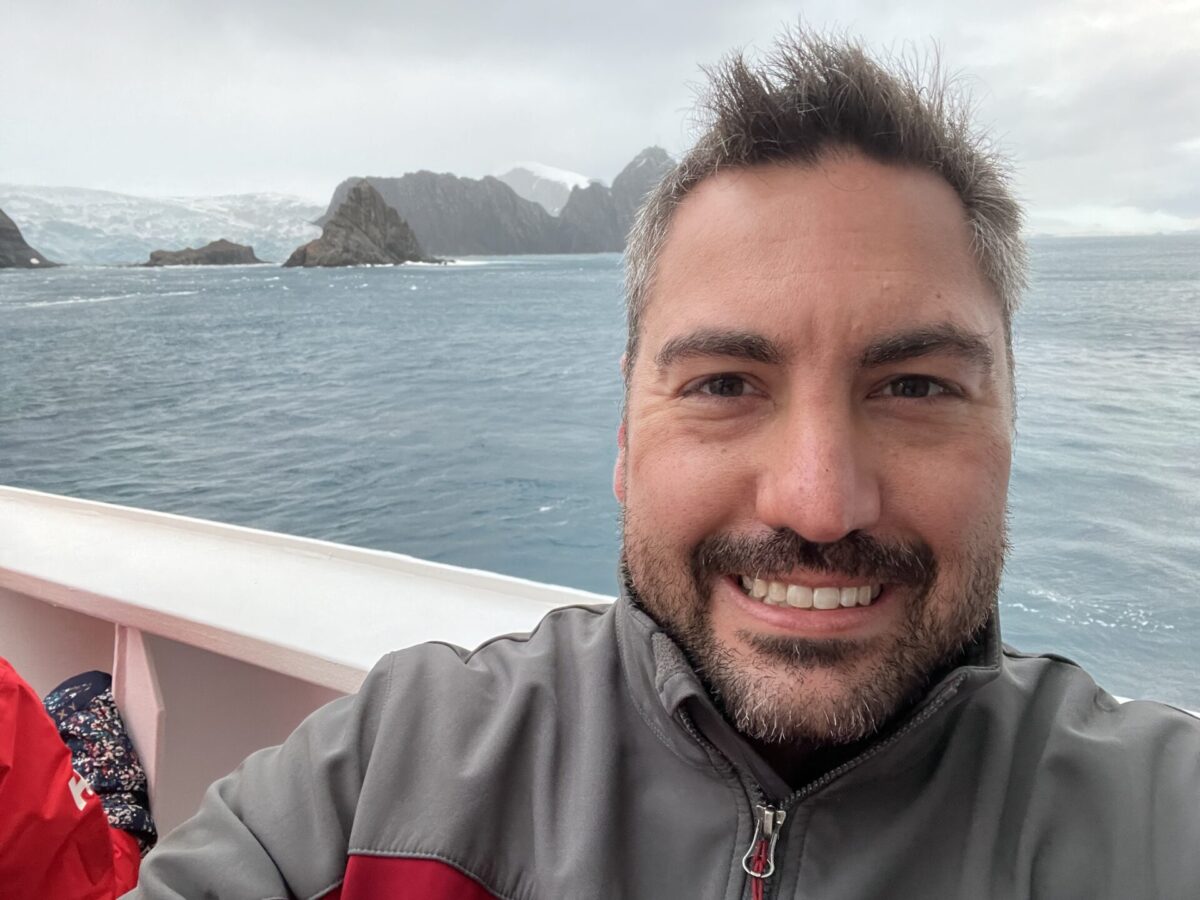
At one point almost succeeding in stealing a knit cap into the open sea. Thankfully it was snagged just in time, as everyone was very studious not to let anything go overboard and pollute our oceans. Throughout the Elephant Island viewing you could hear different pockets of people murmuring incredulously around how anyone could survive in this place for that long. It brought to life not only history but also the indelible spirit and perseverance of humanity when we are at our best and work together.
We then settled into our cabin for a night of rough seas, constant rolling back and forth in our bed, and very little sleep.
Here was our meal run down for the day:
- Breakfast: skipped (CJ not feeling great and we wanted to sleep)
- Lunch: CJ started with a sweet potatoes, baked beets, and kidney bean salad, and I started with split pea soup with barley. For her main she had pasta rustica and I had a vegetable lasagna, and tried something called Norway’s “success cake” for dessert. Which turned out to be some white oatcake with what tasted like butter cream in layers.
- Dinner: I started with a filled mushroom with artichoke, herbs and a vinaigrette, CJ was feeling seasick again with not as much of an appetite. She started with the Chickpea soup with saffron oil, and coriander. For a main I had the rack of lamb with veggie stew, potatoes and a rosemary red wine sauce. CJ had the plant-based roasted new potatoes and lentils, which turned out to be bland and the worst plant based offering so far on the trip. Dessert was a Russian honey cake with sour-cream and salted caramel sauce.
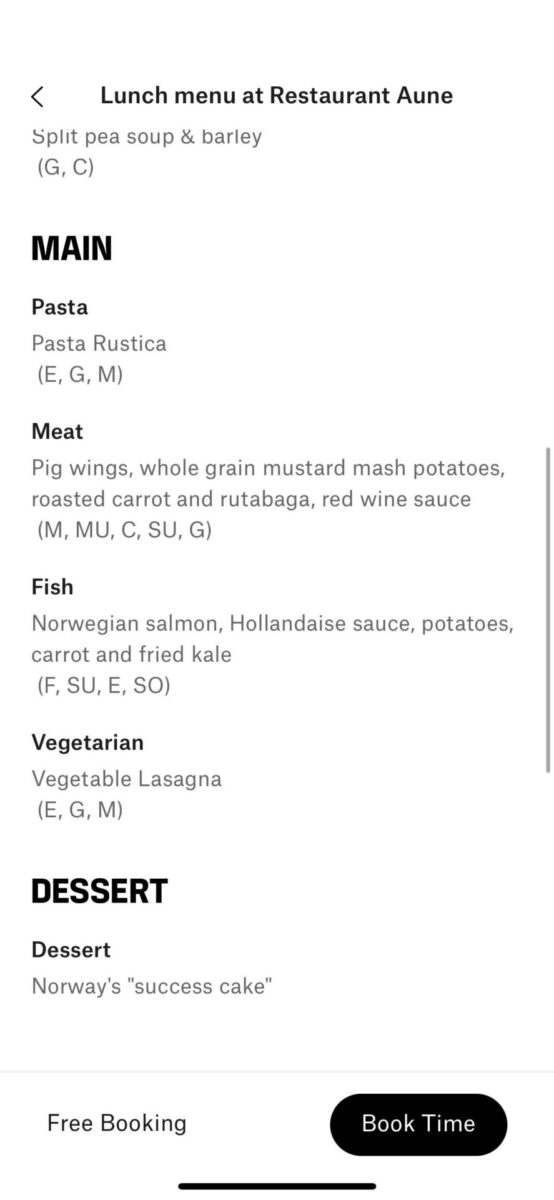
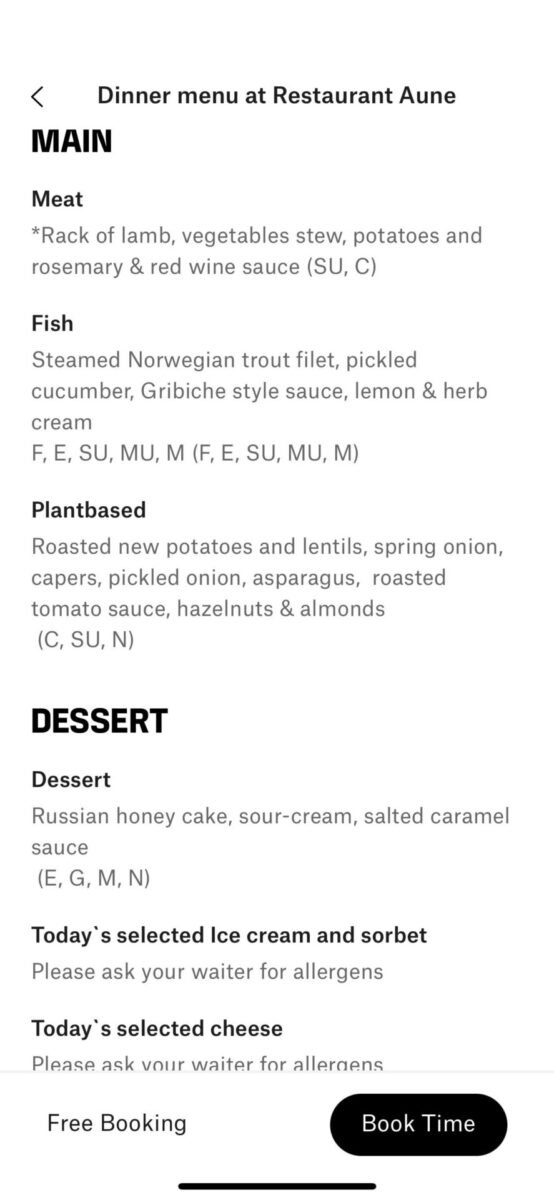
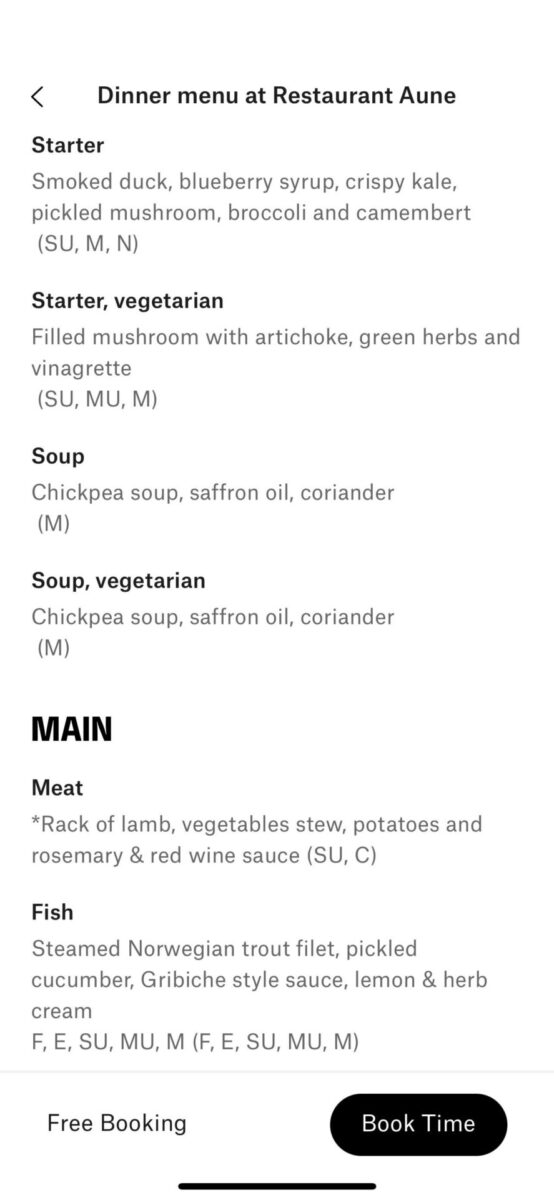
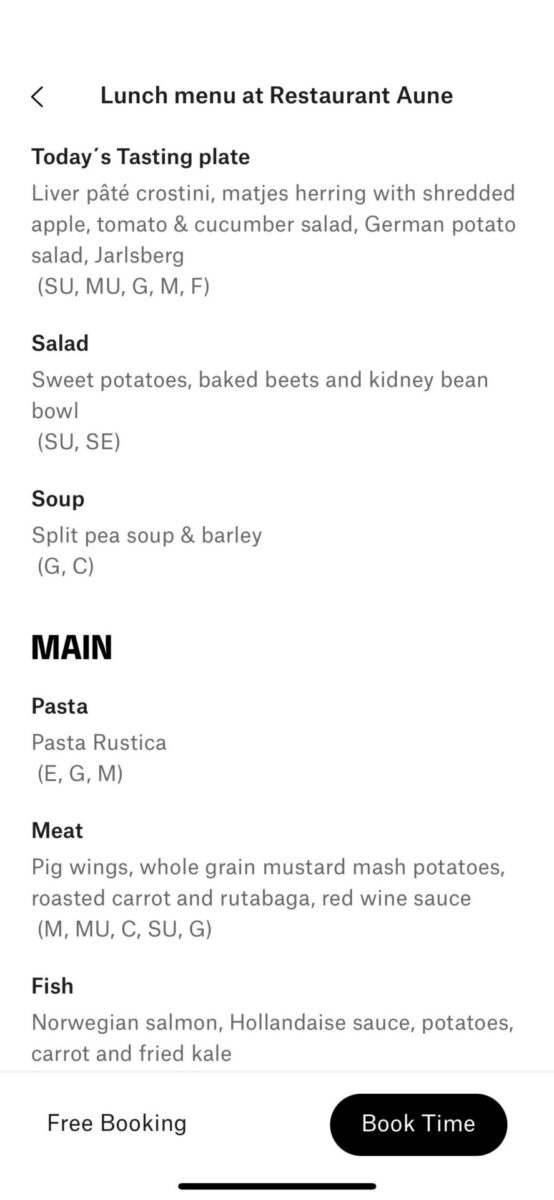
And finally some words about the dining in general (so far) onboard:
- One thing that was readily clear to us during our meals was the consistent repurposing of ingredients. Early in our trip we probably noticed the crispy kale in 8 different meals. The porkbelly from an appetizer the day before would often be cut up into the pea soup the next day. This brought back fond memories for me from my months on Semester at Sea (SAS) almost two decades (am I really that old now!) previous. The joke on SAS had also been that the food would come back around, though it was not nearly the fine dining that we experienced on Hurtigruten. My favorite example on SAS was having chicken nuggets for dinner one night and the next night having sweet and sour chicken, which was just the nuggets slathered in sauce. Gotta love the economy of things and the usage of everything. I think this is something you notice on smaller ships, but less noticeable on the large cruise ships with multiple dining options.
- One thing I had also enjoyed on my SAS voyage had been that they had a grill that was specifically for a la carte options like burgers, hot dogs, and some of the best chocolate shakes I have had in my life. About halfway into our Hurtigruten trip we lamented the lack of some simpler food options or a grill to grab and go food. We were craving a simple burger or pizza at this point in a format that wasn’t sit down service (we craved grab and go!), and the closest we had come was a fish and chips option one day at lunch. I hate to sound like an ugly American crying for my burger and fries, but it was really more about variety than anything else. Eating fancy French style cuisine gets old after awhile, and we’d have also been happy for more ethnic food options as well. Variety being the spice of life, this is what we were missing, and we had run into this in Morocco as well, and on our recent BeNeLux trip, where sometimes Thai food in Luxembourg was the best option for our palates.
- After our first week on the voyage we were also alerted to a change in the procedure. We had previously had late times for all our dining and set times. After that first week we were now moving to a booking system for dinner. However, we never seemed to find later times for meals, and openly wondered who were these people getting up at the butt-crack of dawn just to book their meals for two days ahead. Needless to say we thoroughly hated the new system (not being morning people) as it ended up being just one more thing we had to remember to deal with, versus just following a proscribed program that met our preferences like everything else on the ship.
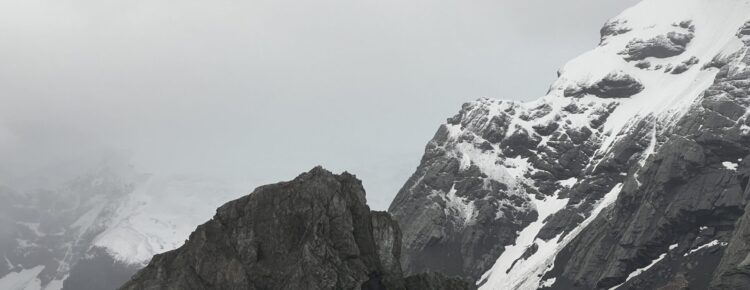
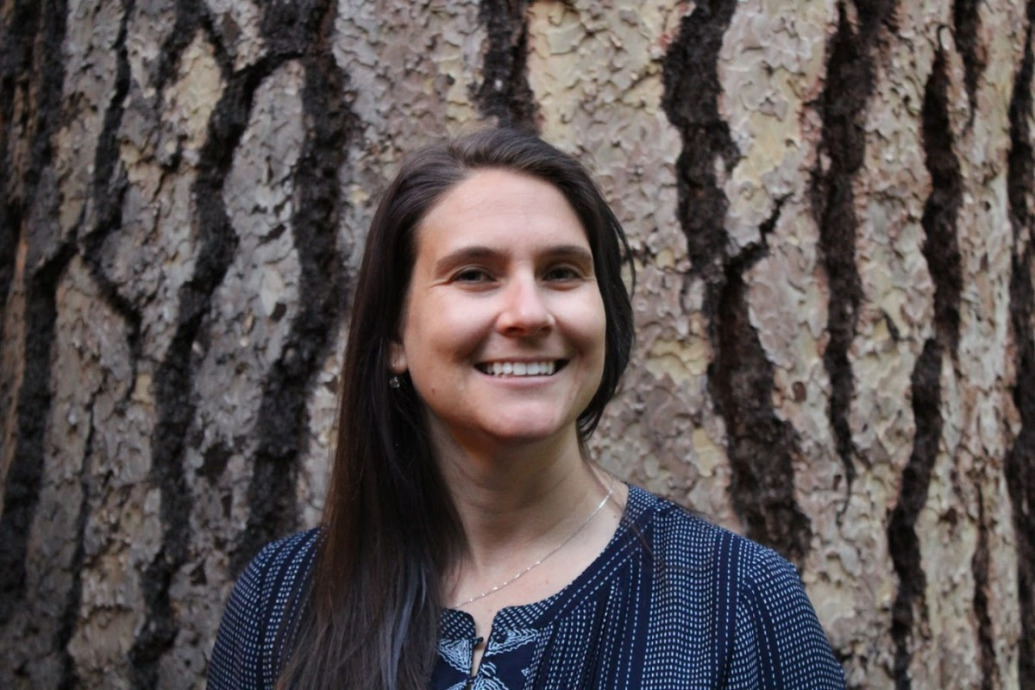
[…] Elephant Island, we spent the next two days at sea sailing to South Georgia continuing in the footsteps of […]